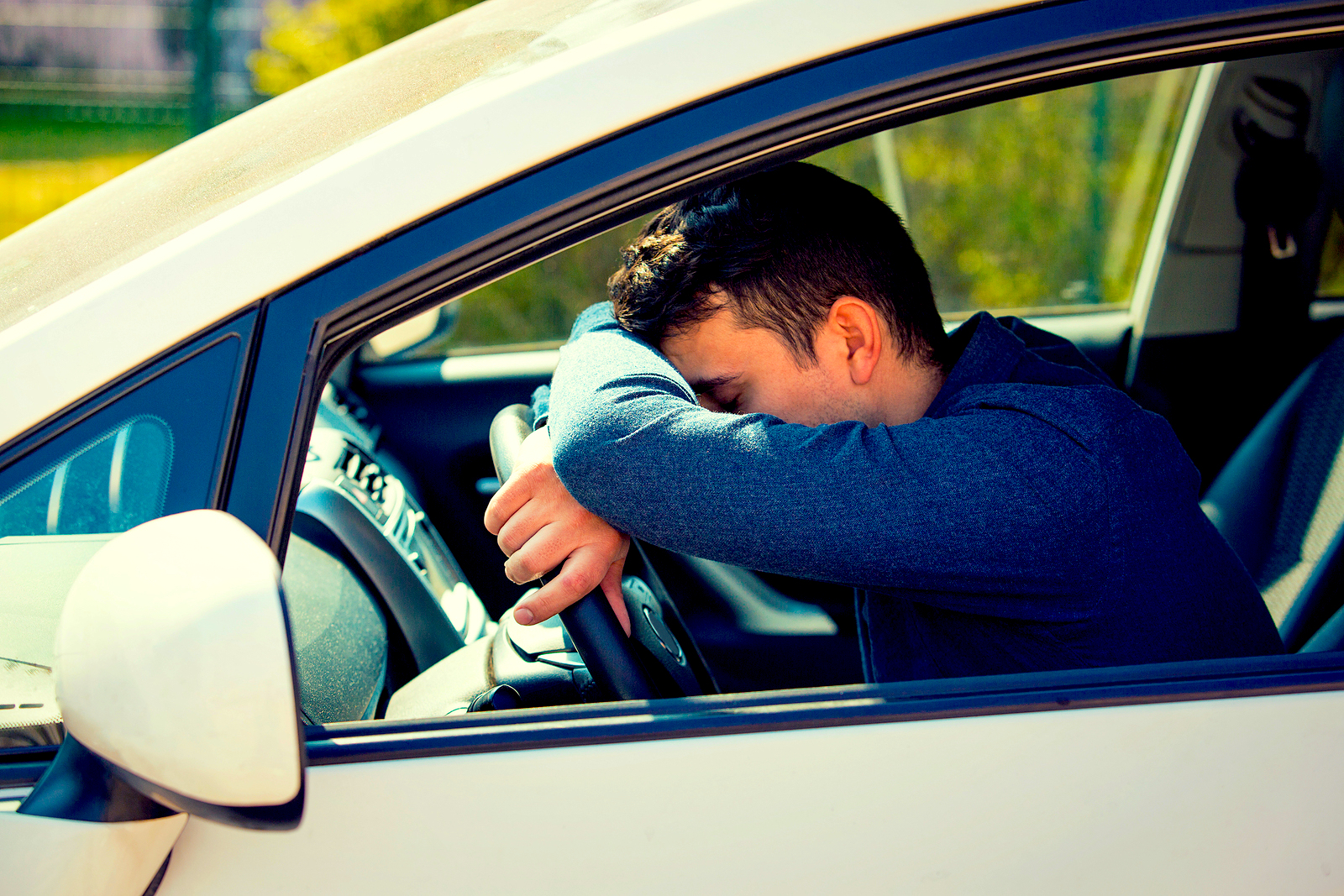According to a recent news report, two men died northeast of Las Vegas in a construction zone accident after a semi-truck driver allegedly fell asleep behind the wheel. The crash occurred around 6:30 a.m. on U.S. 93, when the semi—which was filled with sand—ran over the car in front of it, ripping the car in half. The two men inside of that car were pronounced dead at the scene. The semi went on to strike three other vehicles, causing one to flip over.
The Nevada Highway Patrol trooper investigating the accident stated that drowsy driving is as dangerous as texting while driving, and may produce the same tragic consequences.
Fatigued driving poses extreme dangers to everyone on the roadways in Nevada and beyond. As noted by the Centers for Disease Control and Prevention (CDC), an estimated one in every 25 drivers reports having fallen asleep while driving in the past 30 days. Driving while drowsy is the cause of up to 6,000 traffic crashes every year.
What Is Driver Fatigue and Why Is It So Dangerous?
Driver fatigue is the combination of operating a motor vehicle and sleepiness. While lack of sleep before driving is the most common cause of driver fatigue, other issues may cause this condition as well, including sleep disorders, such as sleep apnea, shift work that interrupts the body’s instinctive sleep cycle, alcohol, legal medications, and illegal drugs. Signs of driver fatigue may include:
- Frequent yawning or blinking, blinks that are of a longer duration, or head nodding
- Drifting out of your lane or driving over the rumble strip on the side of the road
- Difficulty remembering the past few miles you’ve driven
- Difficulty maintaining speed
- Slow reaction to perceived dangers up ahead
- Missing an exit
As reported by the National Sleep Foundation, one out of every six fatal traffic accidents, and one out of every eight accidents requiring hospitalization of a car’s driver or passengers, is caused by drowsy driving. The societal cost of driver fatigue is estimated to be between $29.2 and $37.9 billion per year. When pondering the dangers of driver fatigue, consider these facts:
- Most people need between seven to nine hours of sleep each night to feel rested and function properly.
- Sleepiness decreases the functions needed for safe driving, including vigilance, reaction time, memory, psychomotor coordination, information processing, and decision making.
- The effects of fatigue on driving are similar to that of a blood alcohol concentration close to the legal limit in a well-rested person.
- Drivers are often not aware when they fall asleep for short periods of time, known as microsleeps. Microsleeps often cause drivers to miss the quick reaction that they need to stop before hitting an obstacle such as another car.
Who Is Most at Risk?
People who snore or who report getting less than six hours of sleep per night are the most likely culprits of fatigued driving. Other risk factors for drowsy driving include:
- Commercial drivers who operate vehicles such as tractor-trailers, tow trucks, or buses. A study of 80 long-haul truck drivers in the U.S. and Canada indicated that these drivers often average less than five hours of sleep each night. The National Transportation Safety Board estimates that nearly half of all crashes involving long-haul truck drivers in which the truck driver is killed are a result of driver fatigue.
- Shift workers whose working hours disrupt the body’s natural circadian rhythms that cause people to feel sleepy during the dark early morning hours.
- New or young drivers, particularly young men.
- Those with untreated sleep disorders, including insomnia (the inability to sleep), narcolepsy (excessive daytime sleepiness), or sleep apnea (a condition commonly characterized by loud snoring and multiple instances of gasping, in which sleep is interrupted).
- Everyday drivers who have experienced temporary situations that may lead to lack of sleep such as having a new baby in the house, moving, or adjusting to a new work schedule.
As reported by Virginia Tech, Daylight Savings Time—when Americans push their clocks forward in the spring—can lead to an increased risk of driver fatigue, as drivers hit the road before their internal clocks have had the opportunity to adjust to the change. The body generally takes a few days to a week to fully adjust to time changes, and during that adjustment period, drivers not only experience sleep disruptions, but they also are operating a motor vehicle during a time in which they normally would not.
How Can I Prevent Driving While Drowsy?
When it comes to preventing driver fatigue, sleep is key. As previously mentioned, adults and teens require seven to nine hours of sleep to be considered well-rested. However, if a driver has experienced several sleepless nights before finally getting a full night’s rest, the one restful night may not be enough to catch up on sleep. Often, the individual will need several restful nights to compensate for sleep debt and achieve optimal functioning. Other tips for preventing driver fatigue include:
- Avoid driving between 2 a.m. and 4 a.m., as this is when a person’s circadian rhythm is at its lowest, meaning that for a person already sleep-deprived, the desire to sleep is even greater.
- Pay attention to the symptoms of drowsy driving. If you are experiencing any of those symptoms, find a safe place to pull over and rest or stop and get out of your car. Drivers may also find some relief by drinking caffeinated beverages.
- Talk to a Doctor. If you experience symptoms of a sleep disorder, such as snoring or feeling sleepy during the day, talk to your doctor about treatment options.
- Don’t drive potentially impaired. Avoid driving if you have consumed alcohol or are taking medications that may cause drowsiness.
- Stay Alert.Be cautious of situations that may enhance drowsiness, such as driving alone, driving on monotonous roadways, or driving in heavy traffic for an extended period of time.
Were you been injured in a traffic accident due to someone else’s negligence? Have questions about your legal options? If so, call a car accident lawyer for advice and answers.


